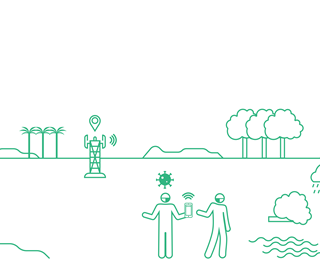Crises, such as natural disasters or conflict, can cause large population movements, as people are forced to flee the affected areas.
The humanitarian response to such events relies on understanding where affected people are located in the aftermath. Call Detail Records (CDR data) can provide important insights at all stages of a crisis, from preparedness to long-term recovery.
| Preparedness (baseline) |
|
| Hazard forecast |
|
| Hazard warning |
|
| Active crisis with network outage |
|
| Active crisis |
|
| Short-term recovery |
|
| Long-term recovery |
|
With CDR data, we can conduct a range of analyses that can be particularly useful in a disaster management context, such as dynamic population mapping and calculating flows between locations.
These indicators can reveal important information before, during and after a disaster, such as determining the number of people who may be affected by a disaster, the number complying with evacuation orders, the origins and destinations of internally displaced people (IDPs), and the return of IDPs to their pre-disaster residence. This information can support better planning for crises, inform the distribution of aid and support for IDPs and the communities hosting them, and facilitate faster resettlement of displaced populations.
In the past, CDR data have already been used to support responses to natural disasters in low- and middle-income countries (LMICs), including:
- Bangladesh
- Democratic Republic of the Congo
- Haiti
- Nepal
- Vanuatu
In these situations, the near-real time generation of mobility indicators from CDR data has been especially valuable as it provided timely insights when up-to-date, quantitative information was most valuable. Such analysis can facilitate evidence-based decision-making, especially during and immediately after a crisis, and can help improve the effectiveness of humanitarian responses to crises.

